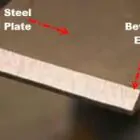Wherever welding is done, like on car bodies, railroad bridges, factories, or pipelines, users and manufacturers expect perfect quality. For the things that are made to work and be safe, the weld seams must be stable and perfect. Since this is so important, most companies use special monitoring and checking systems to make sure quality is always high. In this blog post, you’ll learn what role does welding data documentation play. And why even small and medium-sized businesses can benefit from it.
The criteria for quality are clear.
In some industries, like steel, power plant, and pipeline construction, standards and rules is to make sure that quality is up to mark. Incase of other industries, like the auto industry, this is the responsibility of the manufacturer. In both cases, the quality of the finished product comes from the fact that certain parts of it must meet a certain standard. In the case of welded joints, these include the geometry of the weld surface, pores and inclusions, surface cracking, strength, leaks, penetration, and hardening characteristics.
A product test can check for all of these things, but it’s expensive and takes a long time, especially for large quantities. In theory, all of the parts’ features should be checked in the end using different methods. Also, some criteria, like penetration or strength, can only be tested by methods that destroy the part. This means that the part can no longer be used after it has been tested. Sample testing is a good way to find a middle ground. But this would not totally rule out quality problems.
Monitoring production helps improve quality assurance.
Because of this, it’s best to keep an eye on both the quality of the product and how they make it. Operators can easily tell if production is going well or if there are any problems by looking at different parameters. Some of these for welding systems are voltage, current, wire speed, and welding speed. If all the measurements fall within the specified limits, the manufacturer can assume that the production process went well and the product’s quality is high.
Data management makes welding technology more clear.
Big Data, which is a term for the large amount of data that is collected, stored, and processed, has a lot of potential in this area. Modern welding systems constantly collect process-relevant data with a high level of detail and send it on in digital form. With the help of a data management system, users can keep track of these parameters and set up a production monitoring system that is perfect for their needs. Users can decide which criteria to examine and how tight the tolerances should be.
It is also easy to step into the production process, either by hand or automatically. Purpose is to find mistakes and fix them. This means that production monitoring can often be of use instead of expensive product testing. Both processes can also be useful together if the standards are very high. This gives customers and manufacturing companies the most safety for their quality management.
SMEs need to keep good records of welding data.
A lot of small and medium-sized businesses don’t bother to keep track of their welding data and just ignore the problem. But the truth is that welding data documentation makes every company more productive, saves time, and makes things more open and safe. This is very important, especially in steel construction, where load-bearing steel structures, mass-produced products, or sensitive parts often need to be traceable down to the final welding parameters. Because of this, it makes sense for every business, no matter how big or small, to have full welding data documentation.
With Easy Documentation, it’s easy to keep track of data about welding.
Small and medium-sized businesses will be happy to hear that welding data documentation doesn’t have to be expensive. Just plug in a USB flash drive and you’re ready to go. Easy Documentation is the best way for small and medium-sized businesses to record welding data. And it happens in the easiest and most cost-effective way possible. First, you put the thumb drive into the back of the welding system. Your welding information is saved as a CSV file. Then, you can use the USB thumb drive to transfer your data and make a PDF report. If you need to, you can also give it to your customers as a safety and quality certificate.
You should already know that managing welding data doesn’t have to be hard or expensive. But one thing is certain: keeping track of welding data is becoming more and more important. This is because direct feedback from production helps to improve processes. It helps to keep track of how the system is doing, and find mistakes. The result is production that is reliable and of high quality.





